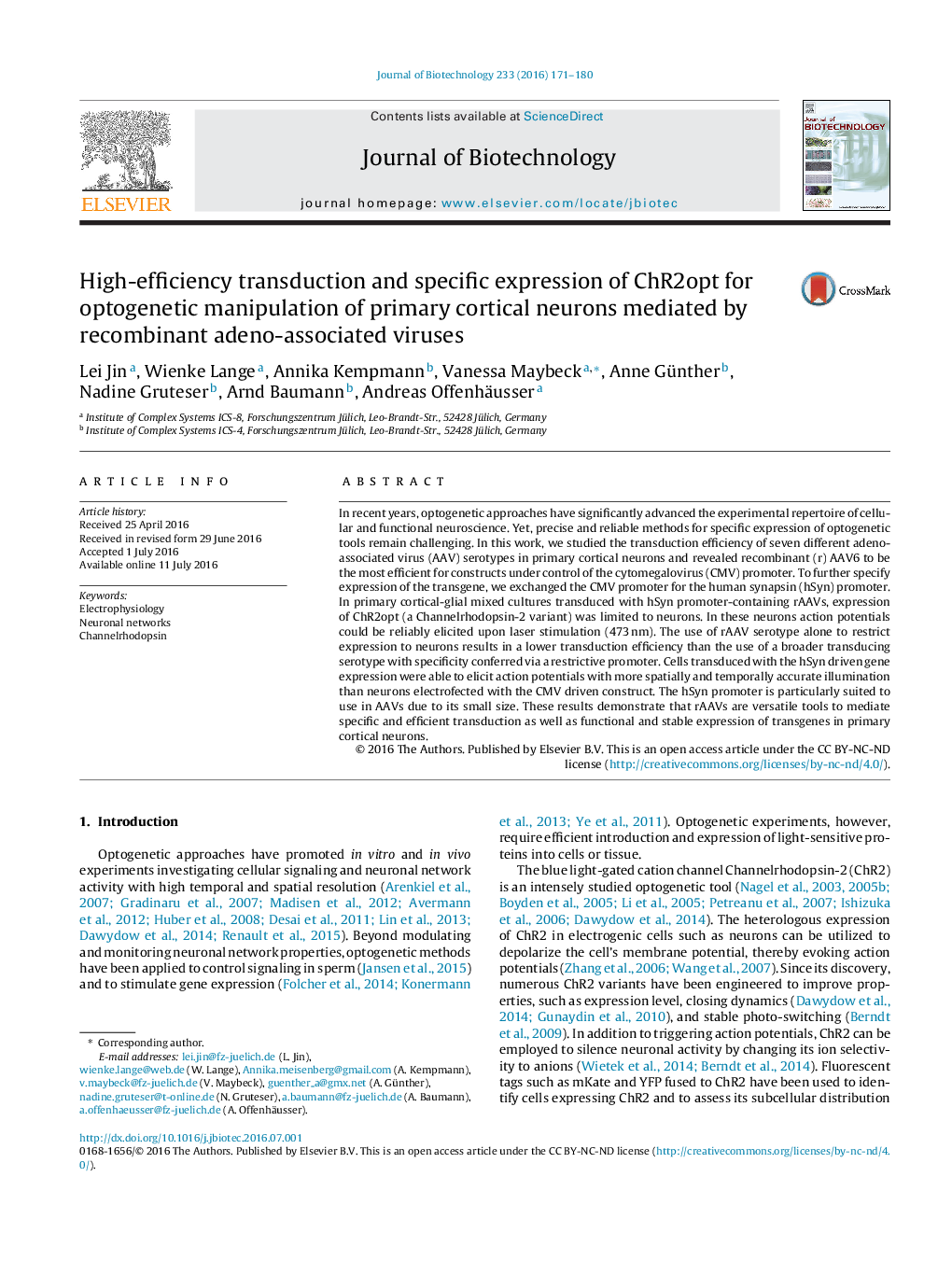| Article ID | Journal | Published Year | Pages | File Type |
|---|---|---|---|---|
| 6490489 | Journal of Biotechnology | 2016 | 10 Pages |
Abstract
In recent years, optogenetic approaches have significantly advanced the experimental repertoire of cellular and functional neuroscience. Yet, precise and reliable methods for specific expression of optogenetic tools remain challenging. In this work, we studied the transduction efficiency of seven different adeno-associated virus (AAV) serotypes in primary cortical neurons and revealed recombinant (r) AAV6 to be the most efficient for constructs under control of the cytomegalovirus (CMV) promoter. To further specify expression of the transgene, we exchanged the CMV promoter for the human synapsin (hSyn) promoter. In primary cortical-glial mixed cultures transduced with hSyn promoter-containing rAAVs, expression of ChR2opt (a Channelrhodopsin-2 variant) was limited to neurons. In these neurons action potentials could be reliably elicited upon laser stimulation (473Â nm). The use of rAAV serotype alone to restrict expression to neurons results in a lower transduction efficiency than the use of a broader transducing serotype with specificity conferred via a restrictive promoter. Cells transduced with the hSyn driven gene expression were able to elicit action potentials with more spatially and temporally accurate illumination than neurons electrofected with the CMV driven construct. The hSyn promoter is particularly suited to use in AAVs due to its small size. These results demonstrate that rAAVs are versatile tools to mediate specific and efficient transduction as well as functional and stable expression of transgenes in primary cortical neurons.
Related Topics
Physical Sciences and Engineering
Chemical Engineering
Bioengineering
Authors
Lei Jin, Wienke Lange, Annika Kempmann, Vanessa Maybeck, Anne Günther, Nadine Gruteser, Arnd Baumann, Andreas Offenhäusser,
